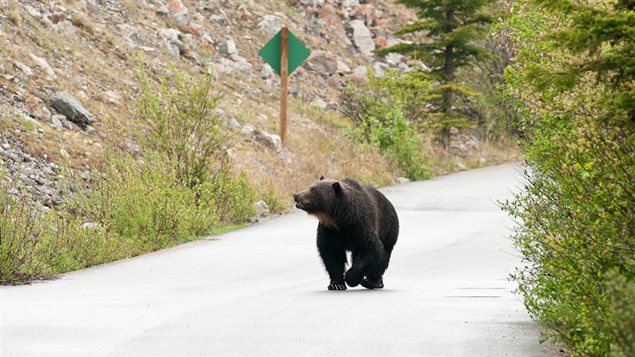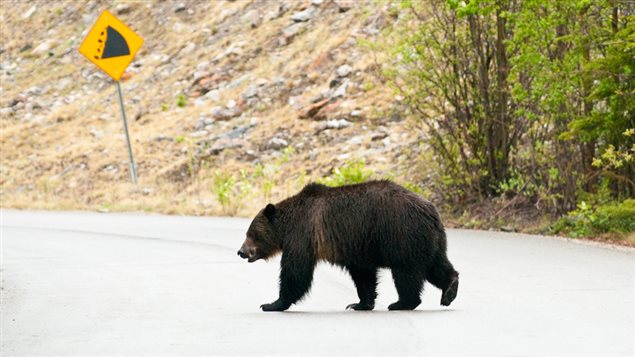Life is not easy if you’re a young grizzly bear at Banff National Park in Canada’s Rocky mountains.
The winter is coming, food is scarce, you have to watch out for those big, grain-laden trains, those pesky tourists with their cameras… And then there is Split Lip.
Humans call him Bear No. 136, he’s a 225-kilogram adult male, a real ‘badass.’ And if you believe the rumours, he killed and ate bear No. 132.
The rumours must be true because the humans have found Split Lip’s GPS collar next to No. 132’s carcass.
Listen“When we went to pick up that collar in the back country, in a remote area of Banff National Park, not too far from the radio collar we found another grizzly bear that was deceased and that bear had been fully consumed by as a food source by this large grizzly No. 136,” said Steve Michel, human-wildlife conflict specialist with Banff National Park.
Michel said several bears in the park have been outfitted with GPS collars for research purposes in order reduce their mortality along the railway tracks that pass through the park.
Bear-eat-bear world
Michel said these bear-on-bear attacks are actually quite common in the wild.
“We have actually documented this several times in the past,” Michel said. “In fact, it’s actually quite common for large male grizzly bears to kill cubs, the very small bears, when they are born, and we’re also seen large male grizzly bears kill other adults, even adult females.”

Michel said these attacks often happen in late fall just before hibernation.
The large male bears kill the cubs to free the female so they can mate with her and pass along his genetics, Michel said.
But the attack on bear No. 132 was likely motivated by the lack of food, he said.
“The season that we had here was a very poor year for bear food, the animals are quite food-stressed right now, they are thinner, they don’t have as much body fat on as they should,” Michel said. “And bears are a very opportunistic species they will utilise any food source they can.”
Michel said the bears’ food woes are driven by a very poor harvest of their staple food in that area, a tiny berry called “buffalo berry.”
“Bears eat literally hundreds of thousands of these berries every day during the height of the season, so it’s the primary food source for them to get all the fat on they need,” Michel said. Unfortunately, it has been a very poor year for the buffalo berry crop, he said.
The lack of food forces some bears to roam near human populated areas. But female bear No. 148 has become quite good at fishing.







For reasons beyond our control, and for an undetermined period of time, our comment section is now closed. However, our social networks remain open to your contributions.